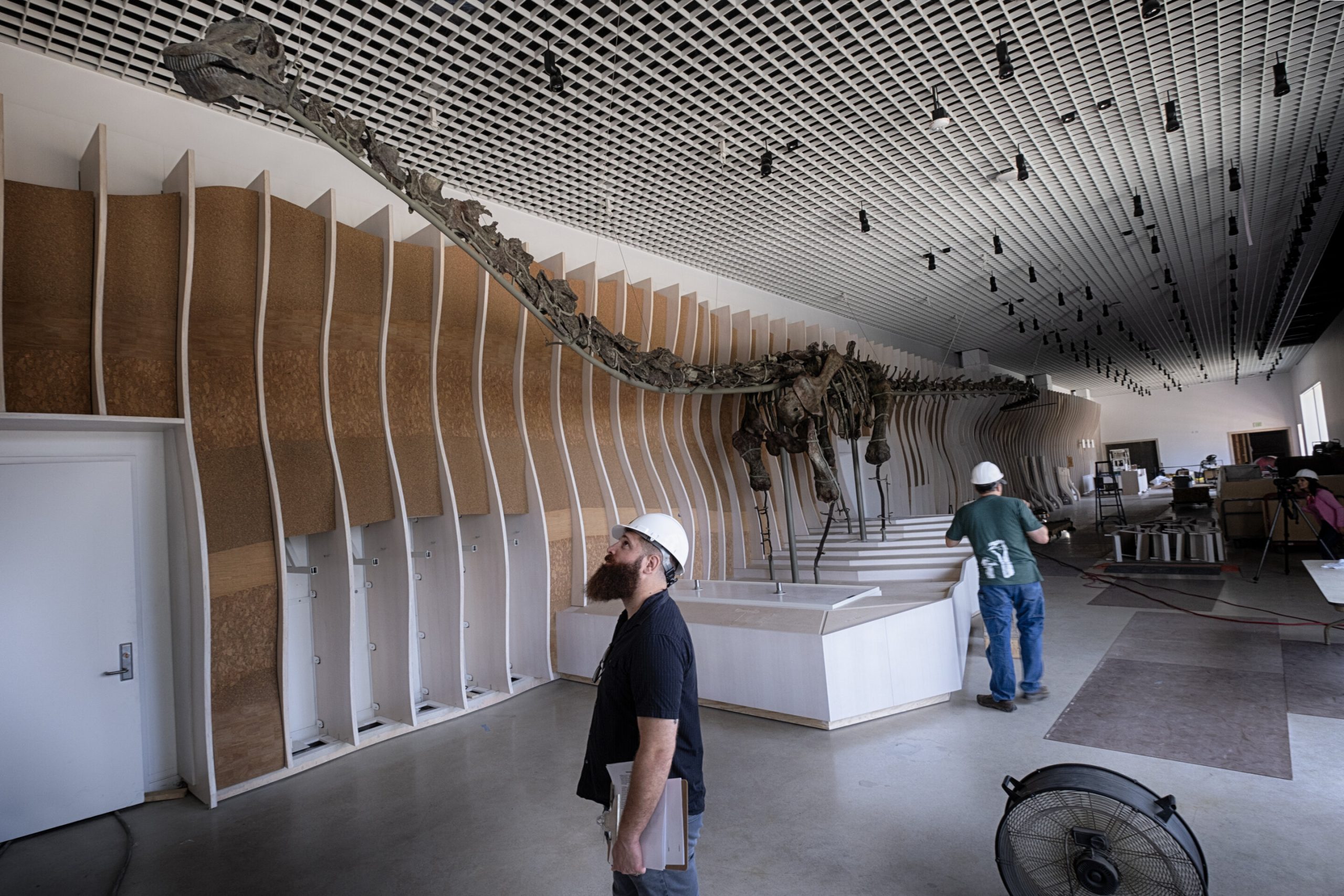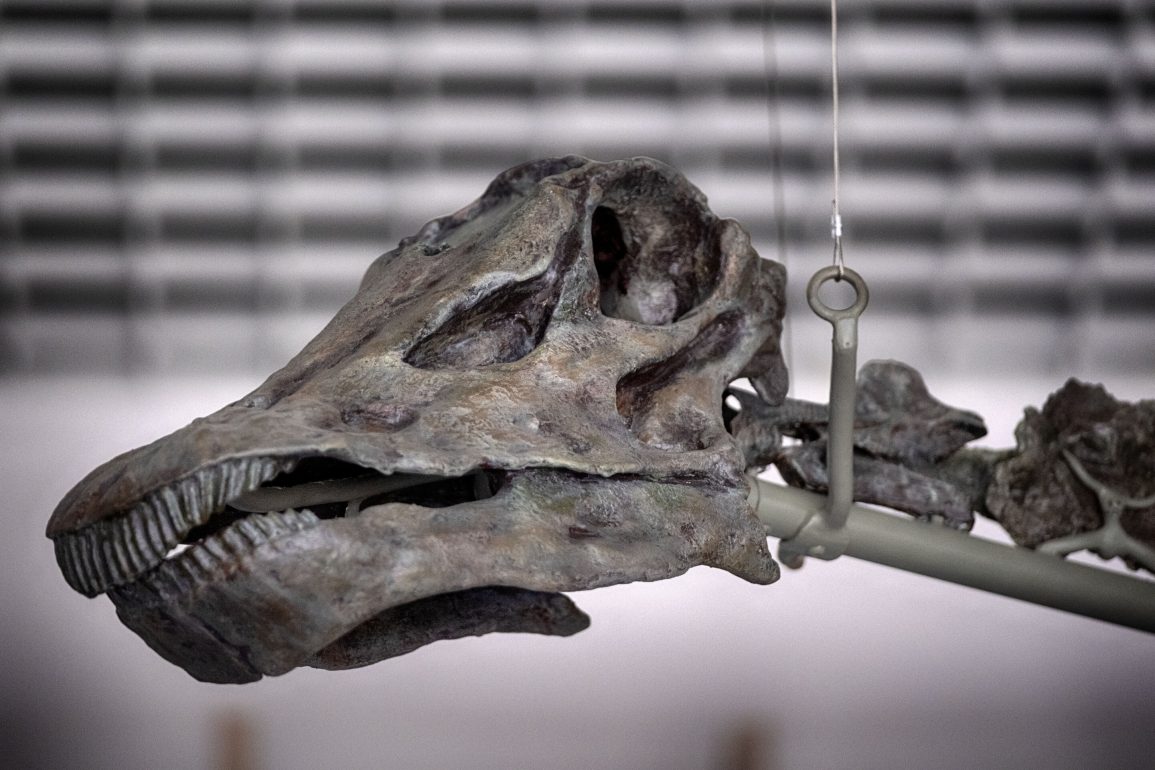The Natural History Museum in Los Angeles is revealing a unique dinosaur, “Gnatalie,” notable for being the only known green-boned dinosaur on Earth. Gnatalie’s bones are green due to the presence of the mineral celadonite, which infiltrated the fossils during the fossilization process, replacing a previous mineral.
This coloration is unusual because celadonite typically forms in volcanic or hydrothermal conditions that usually destroy buried bones, making green fossils exceptionally rare.
Gnatalie, named for the gnats encountered during the excavation, is a long-necked and long-tailed herbivorous dinosaur that lived 150 million years ago during the late Jurassic Era. This period predates the era of the Tyrannosaurus rex, which lived 66 to 68 million years ago. The dinosaur’s remains were discovered in 2007 in the Badlands of Utah, and its unique green bones have intrigued researchers ever since.

Luis M. Chiappe of the museum’s Dinosaur Institute highlighted the educational value of Gnatalie, emphasizing how this extraordinary discovery can engage visitors and foster a deeper appreciation for scientific discovery. The dinosaur’s large size, almost 80 feet in length, and its rare green color provide a compelling way to learn about paleontology and the natural world.
Matt Wedel, a paleontologist at Western University of Health Sciences, expressed his amazement upon seeing Gnatalie’s bones, describing them as unlike any he had seen before.
The dinosaur shares similarities with the Diplodocus, a known sauropod species, and this discovery will be detailed in an upcoming scientific paper. Sauropods are massive herbivores that include well-known dinosaurs like Brontosaurus and Brachiosaurus. Gnatalie will be the largest dinosaur on display at the museum’s new welcome center this fall.
John Whitlock, a sauropod researcher from Mount Aloysius College, emphasized the importance of having a nearly complete skeleton like Gnatalie’s. Such completeness enhances the understanding of both taxonomic and anatomical diversity among dinosaurs. The public chose the name Gnatalie through a vote, selecting it over other names like Verdi, Olive, Esme, and Sage, each reflecting the dinosaur’s distinctive green bones.

